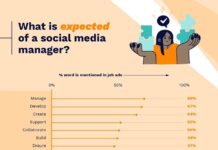Companies need to transition from defining customer segments based on potential spending power to also including metrics driven by softer, social network analyses and a customer’s potential influence, according to a new report from The Economist Intelligence Unit, Re-envisioning Customer Value.
But merely offering financial incentives is not enough, since this is a non-repeatable strategy, according to Michael Wu, PhD, an analytics scientist quoted in the report. Once it becomes known that an influencer is receiving benefits from a business, other people will trust them less.
So how can an organization engage with influencers effectively? The answer, according to Wu, is value co-creation–finding ways to amplify the voice of influential customers, providing them with access to the appreciation of others and giving them a forum for product collaboration. The report offers several examples:
- Intuit has created an Inner Circle community, through which some 25,000 customers use a host of social channels, blogs and forums to give the company product feedback and engage with Intuit staffers. The company also has an outreach program to identify Twitter users with an interest in its products and invites them to join the community.
- GiffGaff, a British mobile-phone company, has made customer collaboration an integral part of its business model from day one: its brand tag-line says it is “the mobile network run by you”. The company’s customer support community has over
200,000100,000 users and deliversthree million5.5 million page views per month as of June 2011.At least 5099% of queries are answered by other customers and 95% are answered in less than one hour. The average response time on the companies Help boards is less than a minute and a half. Customers are invited to submit ideas for business improvements; those that are implemented are listed on its website. There have been over 100, including customer-built apps that enable account servicing via an iPhone. To encourage engagement, GiffGaff rewards participating customers withKudospayback points which can be redeemed for cash, credits or donated to charity.
===== UPDATE: On June 2, I received a tweet from @VincentBoon, “head of community for giffgaff.com” saying that the statistics in this article are incorrect. I’ve asked Vincent if he could comment here or provide correct stats so we can update the post. Here’s the tweet: http://twitter.com/#!/VincentBoon/statuses/76222009796861952. =====
=====UPDATE 2: We have updated the giffgaff.com information with correct stats sent to us by Vincent.=====
The report continues to discuss some of the challenges related to integrating this new, more social approach to customer relationship management, including the need to break down silos across organizational departments, and the need to tread carefully to avoid appearing intrusive and manage regulatory or compliance issues.
But, done successfully, the mindset that your best customers will willingly help you create value is an powerful and transformative idea.
Download the full report here (free, PDF).
Value co-creation will also be part of the conversation at Realtime NY 11 on Monday, June 6, when PepsiCo Head of Digital Shiv Singh will outline the brand’s strategies for co-enabling content and value creation with its customers.


